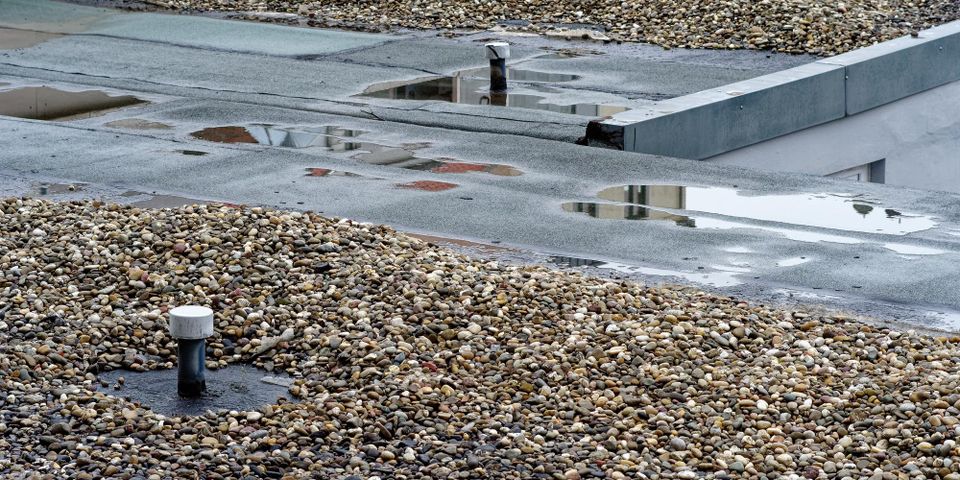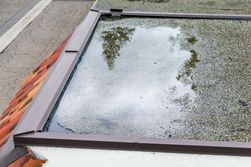3 Dangers of Standing Water on Your Flat Roof

Despite the name, flat roofs still have a slope to them, allowing for proper water drainage. After a significant rainfall or heavy snow, it may take longer for the water to drain, causing temporary pooling. However, these pools should not remain for more than 48 hours of dry weather. Even minute ponding will damage the components and layers of the roof, resulting in costly repairs.
How Does Water Build-Up Damage Flat Roofs?
1. Increased Dirt
Dirt builds-up in the ponding water, allowing for unwanted vegetation to develop. Algae, lichens, moss, and fungi are unsightly and pose risks for employees as slipping hazards.
Pools of dirty water are also attractive nesting areas for insects. If the ponds have penetrated the roof, the building will likely sustain an infestation.
2. Accelerated Decay
 Over time, the vegetation weathers and consumes the surface membrane, allowing water to leak into the roof's lower layers. The seepage will compromise its structural integrity, requiring significant and costly repairs if not detected early.
Over time, the vegetation weathers and consumes the surface membrane, allowing water to leak into the roof's lower layers. The seepage will compromise its structural integrity, requiring significant and costly repairs if not detected early.
Roofing contractors will also test the sub-roof for signs of water infiltration. The exposure to moisture causes mold to grow over time, creating a potential health hazard.
When contractors install a flat roof, they add flashing. They're strips of metal set at a 90-degree angle, acting as a defense against snow, ice, rain, and debris. Prolonged exposure to moisture weakens the metal and can cause rusting. In turn, the flashing won't effectively protect the roof from water, allowing more damage to occur sooner.
The roof's coating provides aesthetic appeal, along with improved sustainability and leak protection. However, its efficacy and life span will diminish from long-term exposure to standing water.
3. Ultraviolet Exposure
Utility bills may also increase as the coating wears down. Under normal circumstances, coating reflects sunlight away from the roof, making it easier to cool in the summer. However, standing water acts as a magnifying glass. The sun's UV rays will concentrate on pools, creating weak areas. In turn, the excessive heat will force the building's HVAC system to work harder, leading to a potential breakdown.
The UV rays are damaging in the winter, as well. The concentrated exposure quickens deterioration and weakens structural integrity. If the problem isn't solved quickly, your business may need a roof replacement rather than a simple repair.
Standing water is a sign of drainage issues. To prevent excessive damage, reach out to Janzti's Roof Restorations. Their licensed, insured, and experienced contractors service the roofs of businesses throughout the Pittsburgh, PA, metro area. They will ensure proper drainage and repair any damage caused by standing water. Their rates are cost-effective, and they offer extended warranties. Visit their website to read customer testimonials. To schedule a free estimate, call them at (724) 734-3056.
About the Business
Have a question? Ask the experts!
Send your question

